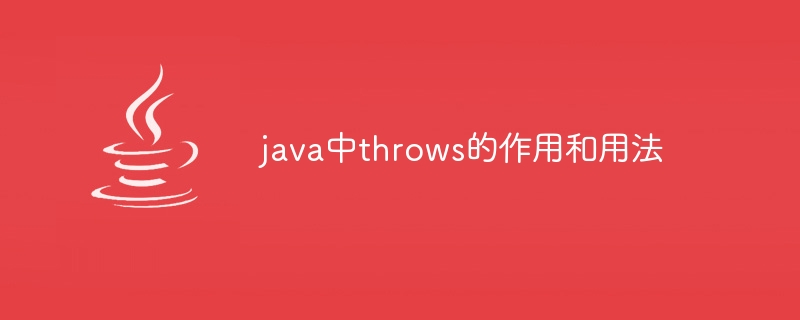
Thethrows keyword is used to handle exceptions, allowing methods to delegate exceptions to the caller without handling. It identifies the types of exceptions that a method may throw and allows methods to throw exceptions in the method body and delegate exception handling upwards.

The role and usage of throws in Java
The throws keyword is used to handle exceptions in Java, allowing methods Delegate the exception to the method that calls it. This means that the delegated method does not have to handle the exception it catches, but can throw the exception up to be handled by higher-level code.
Function
Usage
#1. Declare exceptions in method declaration
public void doSomething() throws IOException, SQLException {
// 方法体
}Use throws in method declaration The keyword followed by the exception type indicates that the method may throw these types of exceptions. The code calling the method must handle these exceptions or delegate them further.
2. Throw an exception in the method body
try {
// 执行一些操作
} catch (IOException | SQLException e) {
throw e;
}In the method body, you can throw an exception by using the throw keyword followed by the exception object. This will cause the exception to be delegated to the code that calls the method.
Advantages
Note:
The above is the detailed content of The role and usage of throws in java. For more information, please follow other related articles on the PHP Chinese website!




